Shaped by the 90s
6/2/2022
The 90s: last in the lineup of cool decade names. I suppose the early 2000s, in all their newfound nostalgia for the old web and the like, have been called the ‘naughts’, but it just doesn’t have the same ring. Also in theory, we’re back to the 20s, but for simplicity’s sake I prefer to keep such namesakes confined to the twentieth-century.
Alongside its partner in crime, the 80s, the decade was a hot bed for pop culture, aesthetics, and deep-seated nostalgia. But much like my imagining of the 50s being full of rollerskate-delivered fast food, poodle skirts, and the luxury of surviving on a single income, it was more likely to also include pervasive cigarette smoke, inadequate dental care, and hand-me-downs that didn’t match what was generally accepted to be in vogue.
So what of the 90s in that regard? Was everything zig-zag confetti-themed? Did neon-purple triangles dominate every advertising theme? Did anyone unironically wear a bucket hat? Well I’m going to dig in and see what exists only as a trope of the zeitgeist, and what life was actually like.
Except for that last one, which I will answer right now: it was in fashion for one month in 1999, then it disappeared.

If I were to be born again, I’d only tweak the year slightly and dial it back to 1976. This would mainly allow me to reap some of the early 80s toys, and then place me as a young adult in the 90s so I could enjoy some of the concerts that would never be the same again. That said, my current standing allowed the gamut of my formative years to all fit neatly into the decade at hand.
And what a gamut it was… We started with the last remnants of hair metal and ended up with nu metal. Cartoons went from Saturday morning excuses to sell merchandise to South Park and the twisted MTV animated blocks. Geometric designs to cyberpunk. Even hats made the shocking transition from being worn normally to being worn backwards. Earth-shattering, I know.
Style
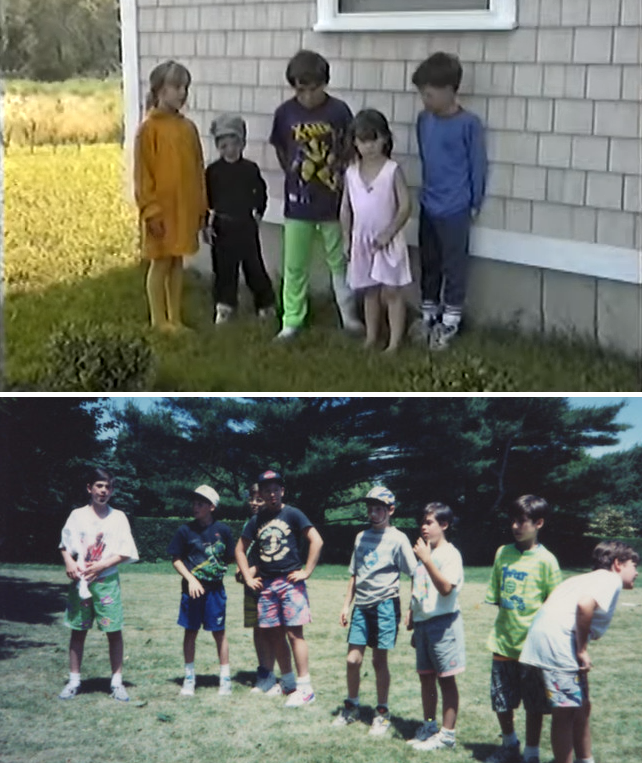
So let’s dial back to the beginning. Like any transitional period, there is some bleed over from the time just before. When I think of the 80s, it’s easy to imagine flashy video games, neon lights, and outrageous pop music. While a fair amount of that is true, I’d generally pin a lot of that on the first few years of the 90s, and leave the majority of the previous decade with leaded gasoline, endless boredom without the internet, and those corduroy pants that made the swish-swish-swish sound when you walked.
Truly the biggest aesthetic stereotype that needs to sit on the latter side of the fence is the bright eye-blinding neons that were everywhere. Maybe the 80s had actual neon lights in bars and stuff where smoke filled the air, but otherwise the timeframe was filled with dark and flat color schemes. Not so a few short years later, when everything came alive. From slap bracelets to translucent phones, you could only stare at objects for so long before risking permanent vision damage. Remember Lisa Frank stickers and file folders? Yes, that’s a design choice that sits firmly where you think it should. You weren’t cool in school unless you could reflect the sun’s damaging rays into the faces of your peers.
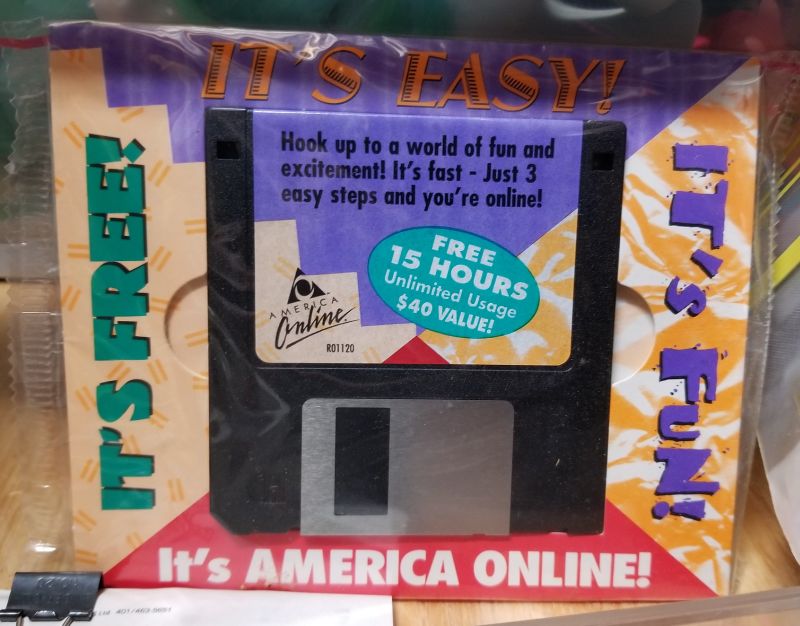
Did the colors last? Sadly no. Well maybe on consumer products, but in advertising it was shifting ever so slightly. Most often seen on the bumpers between shows on the newly formed Fox television channel, everything went pastel, and gradients gave way to abstract shapes. Spirals, squiggles, and dots would pulsate and jump in a two-frame animation set against a background that abandoned all semblance of color theory.
Then grunge hit, and as quickly as one theme began, it was cast aside for gritty realism filled with scuffs, scrapes, and graffiti. Finally as the decade came to an end, a new cultural shift started to take hold. I attribute this change to two things: the internet (and any new technology that the older generation didn’t want to learn) and the bulk of Generation-X now become teens and young adults. Mass media started to cater to this X-treme group, so everything became edgy, loud, and in your face. The slacker generation became the hacker generation, attention spans were shortened, and matrix code dripped across anything that seemed remotely computeryish. It certainly didn’t end there as the 2000s would run with this motif in full force, but that’s another article for another time.
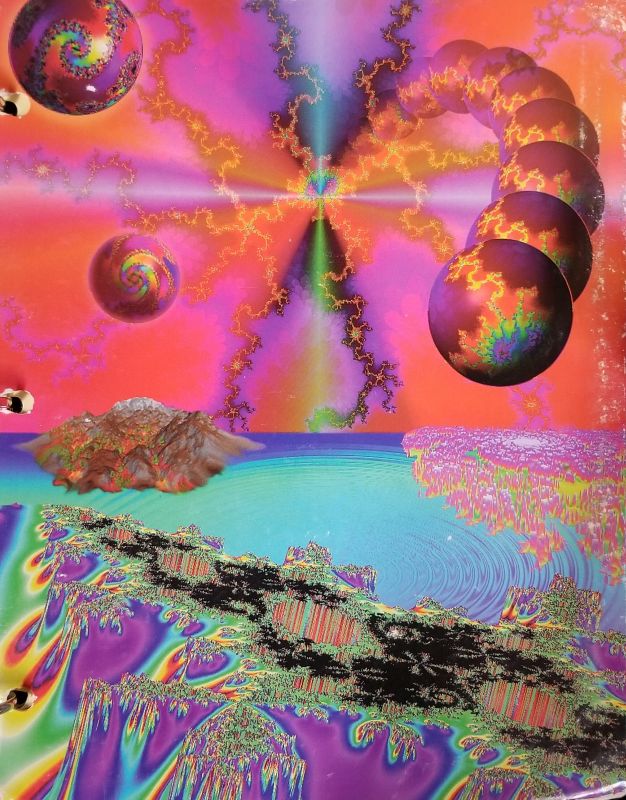
Music
Music took another interesting journey. As with design choices, we carried over many of the genres that had their start in the late 80s. Hair metal was on its way out, but didn’t completely die. Even if the musical stylings faded, the long hair persisted for a time, and though it wasn’t frizzed and teased, it still fell below the shoulder. Look at any of the grunge bands in 1991 compared to 1996, and you’ll see what I mean. Rap and Hip-Hop also began earlier, but found a foothold soon with a darker and grittier edge to it. Like the grunge movement, things had shifted from fun and light to something more dire and serious. I’m not entirely sure why, since I feel like the 90s were a more carefree time, but perhaps good times make whiney people. I don’t know.
That said, the shift that resonates with me the most is the one from vapid 80s pop to vapid 90s dance. It didn’t make any more sense, but the rhythmic pulsing of Eurodance, anthem house, and good old fashion stadium trance are still something that fills my car until today just as it did riding with my parents to whatever errand we had to do. 2 Unlimited, Real McKoy, and Culture Beat still hold up, and in this instance, there was still some joy in the music. The great majority of those subgenres mentioned were in the first half of the decade, with psytrance and goa taking over the latter. However at around the half-way mark, I began to jump back into the rock inspired options.
Grunge left as quickly as it came. You could only be depressed in the western Seattle area so long before you either made it big and were happy or ended up as some goo on the floor next to some questionable evidence. Then was the maturation of another style that took its initial visual look from the fashion popularized by grunge, but ramped up the musical intensity into something completely different. No more moping and whining, now we were jumping, moshing, and head-banging our made-up frustrations away…in a fun way somehow. Gen-X only knew one volume, and that was hardcore, so what better name for the genre. Suicidal Tendencies, Biohazard, and Machine Head were bands that I missed out on—hence the desire to be born ever so slightly earlier—but have found a place in my musical rotation since. So just as grunge grew up fast, so did hardcore. Musically, the sound persisted, but not so much insofar as its raw intensity. Angst was certainly still in the air, so flannel was out and sports attire was in. We had entered the era of nu metal.

Korn was the big kick off. I remember hearing about them in high school, but it took a few years before there were enough other bands to jump on the bandwagon and make it a full-fledged genre. Fortune smiled on me, and the whole movement kicked off as I went to college. Limp Bizkit’s was first introduced to me on IRC chat from distant frenemies whom I never met, but soon the radio was buzzing about the nookie, a term I had no idea as to what it meant and made the mistake of singing out loud before I did.
And far from it being a homogenous style, there were the technical applications of Mudvayne, the industrial tweaks of Spineshank, and of course the rap influence of pretty much every other participant. Nu Metal in fact had probably the longest run, even if the latter entries began to have little in common with the turntables and guttural growling from the start.
Industrial acts even had some crossover, with NIN spanning the decade, and the likes of Gravity Kills, Stabbing Westward, and KMFDM all getting there prime years smack in the middle. I’d like to go into the alternative-rock sub-sub-genre, but that was to wide and weird to adequately encapsulate. You’d have some sweet pop soundtrack with a screeching female vocal, sharing the airtime with BB King samples overlaid onto a downtempo dreamy rock song.

Back to nu metal. How did it end? Well many would say at Woodstock ’99, but fans would be lying if the fires and anarchy didn’t make them like the music even more. (They’d also be lying if they admitted to liking it ever, but that’s another issue of the time). No, the real death was the sophomore album drop. Anticipation was high, but we were treated to more of the same, and the societal boundary pushing wasn’t going to strike twice. Korn and Limp Bizkit escaped it to a degree since their first releases predated the mainstream popularity, but upon round three, it felt repetitive. We’d also grown up a few more years in the process, so the target demographic had moved on to a degree.
Technology
Tech developments are sort of a given based on Moore’s Law, and the progression over those years was certainly significant. The 70s brought refrigerator-sized computers down to the dawn of home PCs, and the 80s got said PCs into the homes of more than just the hobbyists. But the 90s dug full force into the useful applications of them.

Macs had a graphical UI for some time, but 1990 introduced Windows 3.0, thus bringing everyone out of the command line era and making the mouse more than just an optional accessory. Platformers like Commander Keen and the first FPS games like Catacombs 3D squeezed out all they could from the EGA palette. But by the end in 1999, Quake 3 Arena was filling your screen with rendered curved surfaces, alpha-channel translucency, and volumetric fog, all powered by accelerated graphics cards that cost more than most of the other components in your setup combined.
But despite the progress, nothing really felt ‘fast’. This was mainly due to the rapid progression of what we intended the computer to do, often leaping ahead of the hardware needed to do the job. I remember John Carmack of Doom and Quake fame saying that his projects generally were intended for specifications that didn’t exist yet. I was usually caught in the pit of not having the latest gear to run something in an acceptable manner, as shown when Unreal became more of a slideshow than a fast-paced action shooter.

And of course the computer didn’t start and end from the keyboard to the screen. Once the internet became more accessible, everything changed. Even in the earliest years, you could dial into a BBS and grab pictures and the latest shareware games. Such games were a radical shift in marketing at the time. No longer did you buy a game from a store and have to live with it, unchanged for all time. Now you could get up to a quarter of the full game for free, with no strings attached. If you liked it, then you could buy the rest right from the developer, cutting out the middleman.
By the middle of the decade, the web opened up. In addition to ‘surfing’ other sites, most internet providers and some educational institutions would allow you to host your own. Staking out a small portion of the ‘net’ was a rite of passage amongst early adopters, and the introduction of free hosts such as Geocities, Tripod, Angelfire, and Xoom only increased the proliferation of fan sites for every conceivable topic.

By the end, Flash became the dominant media form, allowing cartoons, introductory splash screens, and navigational menus. Sites also became less static, with either manually updated news sections, or database driven scripts that kept maintenance to a minimum. Just before blogging became less of a hurdle for entry into the online sphere, E/N or Everything/Nothing sites popped up, smashing together the randomness of an individual’s site with little to say against the content of personal fandom and thoughts. Some were terrible, others were great, but all claimed to denounce others who weren’t true designers.
Much of these change bled over into the culture at large. Internet use wasn’t the way it was later in the 2000s and certainly nothing like after the advent of social media where everyone’s aunt Bertha could engage in passionate slacktivism about the social issue du jour.
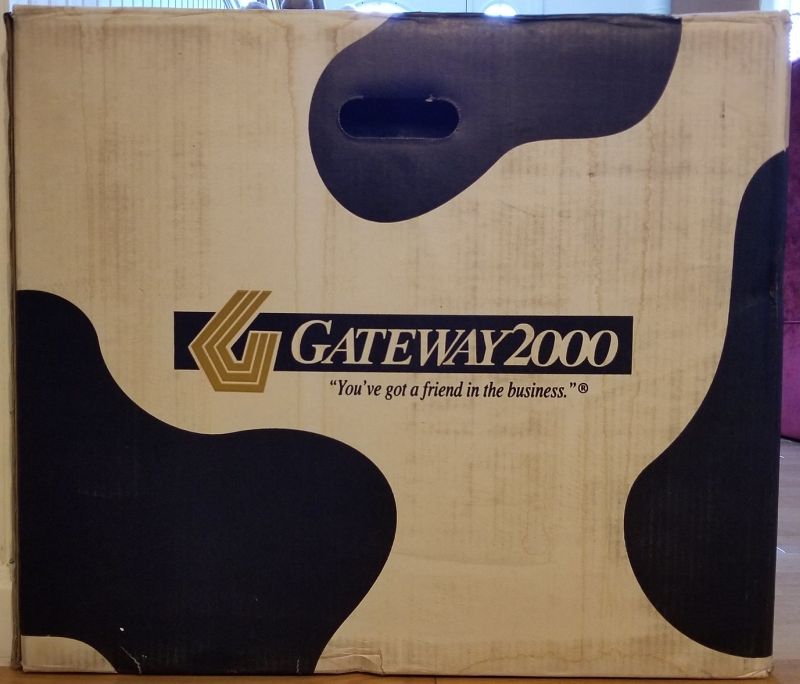
No, in the 90s, the internet (and technology in general) was a wide void of mystery, able to do or solve almost anything. Hackers could tap away at a keyboard and gain access to the most secure of systems as long as they wore trendy sunglasses and had an alias with more numbers than letters. Virtual Reality would still be 25-years out in practical terms, but there were no shortage of media like VR-5 and Full Moon’s Arcade that teased what the future may hold. The only constant was that if you died in VR, you died in real life. No exceptions.
The Gen-X crowd adopted the new culture most easily, for better or worse. It was an elite club for a while, and while there were certainly the younger AOL kids, the 15-25 demographic spent their time chatting on IRC chat, pirating warez, and tricking each other into opening shock sites filled with all sort of graphic crime scenes. I saw my first murder before ever going to a class dance, so growing up was never going to be the same.

Life
So it’s easy to outline what external influences were present during a given time, but what was life actually like on a day to day basis? The short answer: it could be really boring.

Often I hear, “What would kids do without their phones/computer/electronics?” Everyone needs a phone to diddle with or a video game to pass the car ride. It’s easy to assume that the current generation is dumbed down with such an array of readily available stimuli—and perhaps that’s true in some senses, but I’m not here to stoke the inter-generational embers—but in truth, we were really bored quite often without something to pass the time. In the same line of thinking, this could be seen as a net positive, as the youth would need to be more creative in order to entertain themselves.
That’s certainly not wrong. We had comic books, the over-the-air TV, notebooks to draw in, home movies to film, and an attic of toys to play with. Home movies in particular played a large role in our free time. Starting with a simple Video8 cassette recorder, we filmed skits and such in a strict linear order without any way to edit it. By the very end in 1999, we had a capture card for the computer and even dipped into the digital world with mini-DV.

That said, there were the dull times, specifically if you had the dreaded trip to your parent’s job. Eight hours of precious nothing to do in an emotional vacuum. Going stir-crazy didn’t begin to describe the horror of making it through to the end. The vending machine only provided so many outlets for alleviating the doldrums, all while you tried to remain quiet and not bug the adults who were trying to get something done. Frequent bathroom visits became a break from the sensory deprivation chamber, and sometimes the vending machine could work in tandem, helping complete the sugary soda/pee break loop.
In the end, I wouldn’t trade those days. Sure, I can always have something to fuel my attention despite how much I try to put the phone down, but sometimes I feel like much of this is idle wasted time. That’s probably why I’m writing this…to create something and use technology to add to my life experience rather than drain it.
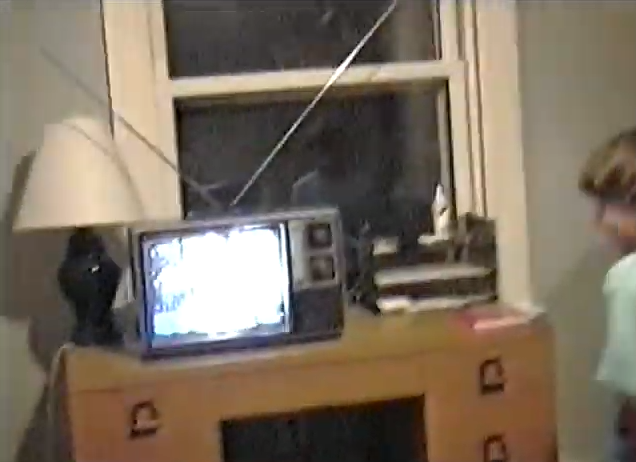
Photo albums from film have turned into a Flickr account of tagged and chronologically sorted digital snapshots. My six-year never-missed-a-day journal has been replaced with a scattering of blog updates and social media posts that can document my life down to the minute. Probably the only thing that has taken a strange turn, lay in the music that we consume.
The trend of physical media to digital streaming is obvious, but the path to this end point is neither straightforward nor the only conclusion. In the earliest days of the 90s, there was only one choice for both your audio and video needs: tapes. Music would be on cassettes and video on VHS. Annoying in some regard, but there was some benefit to keeping your spot no matter how long of a break you took. Just remember to ‘Be Kind, Rewind’ else you’re going to have an extra dollar added to your rental fee.

Eventually both transitioned into a disc format, with CDs taking a several year lead on DVD. Improving not only in quality, bonus features on DVDs and hidden tracks on CDs were novel ways to enjoy the new format. Later, movies easily shifted into their streaming offerings once high-speed bandwidth became available and HD discs, such as BluRay and HDDVD, slipped in popularity.
But music took a few detours. There was some tinkering with a high-def CD option, but no one was going to upgrade their music players with the same enthusiasm they did with their TVs. Instead, the digital option took hold early, just not in the way the industry wanted. Much has been made over Napster, MP3s and the controversy that Metallica made over it. In a stroke of irony, I had grabbed all of their discography before Napster debuted by finding FTP sites strewn about the internet, some requiring ratios (uploading some sort of data as a requirement to download a greater amount in return) before getting what you needed. This went back and forth for a while, eventually merging into the services we know today.

In Summary
If I had to define the 90s in some concrete terms, I’d say it was the last time where we were able to remain disconnected. Is this a good thing? I can’t say. Cell phones are useful in a pinch, the internet is great for finding answers, and social media is handy for keeping in contact with those who you wouldn’t otherwise. But cell phones mean you’re always within reach. The internet gives you answers but overwhelms you ten-fold with white noise. And social media has unleashed a shift in humanity that no one could anticipate nor adequately adapt.
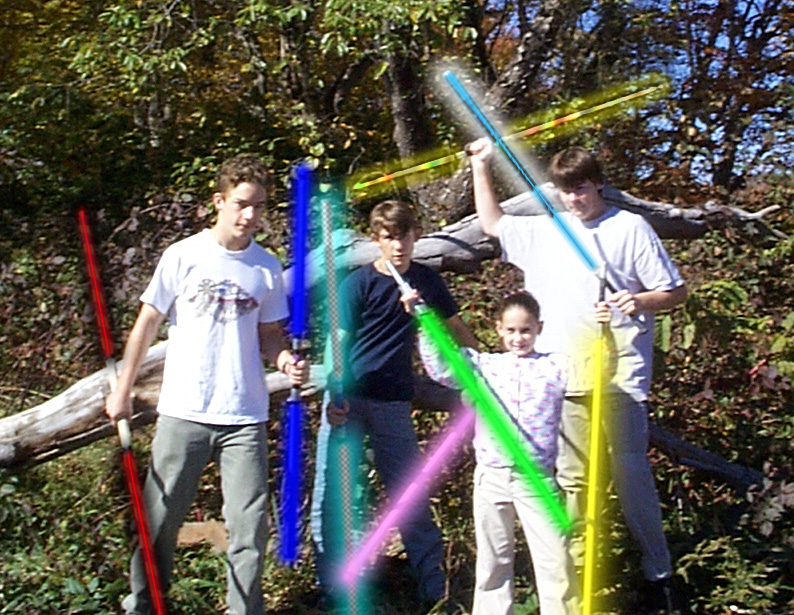
We found music by listening to the radio and then blindly hoping the rest of the album was good when we finally bought it. If it weren’t, then you just lived with it. We watched movies by renting them at a store and had to get through them by the next day. VHS tapes were $100, so the next best thing was to record your own and try to splice out the commercials. When all else failed, there were TV shows that only aired at certain times, and missing one meant you had to wait until syndication during the summer months to try catching it again. Research for school assignments was done out of the 1964 encyclopedia your mom still held onto. Phones didn’t have caller ID and picking up the receiver elsewhere in the house would relay the same conversation. This same receiver would also kill any lengthy download that may have been in progress for hours in order to grab a single song or large photo.
Contact with friends remained primarily at school or church, and sometimes on the weekends if they could come over. A telephone call was the only way to get ahold of them but ran the risk of having to talk to their parents, which was never fun. Eventually e-mail gave us a digital alternative, even if it were mainly used to forward off-color proto-memes and rather offensive chain mails. At airports, families could wander all the way to the boarding gate to wish travelers a safe trip, and you didn’t even have to take off your shoes. Ten dollars filled up the gas tank in your ’88 Chevy for a week, despite no attempt at fuel efficiency. No one cared about politics because the nightly news only relayed the local happenings, and that’s as much effort as anyone gave current events. I literally had no idea who was running for president until it was over.

So while I’m certainly thankful for many of the advancements that have arrived since, I look back on those years fondly for their simplicity. Now pardon me, I need to go play some Doom and pretend I wasn’t totally more into Quake at the time.
